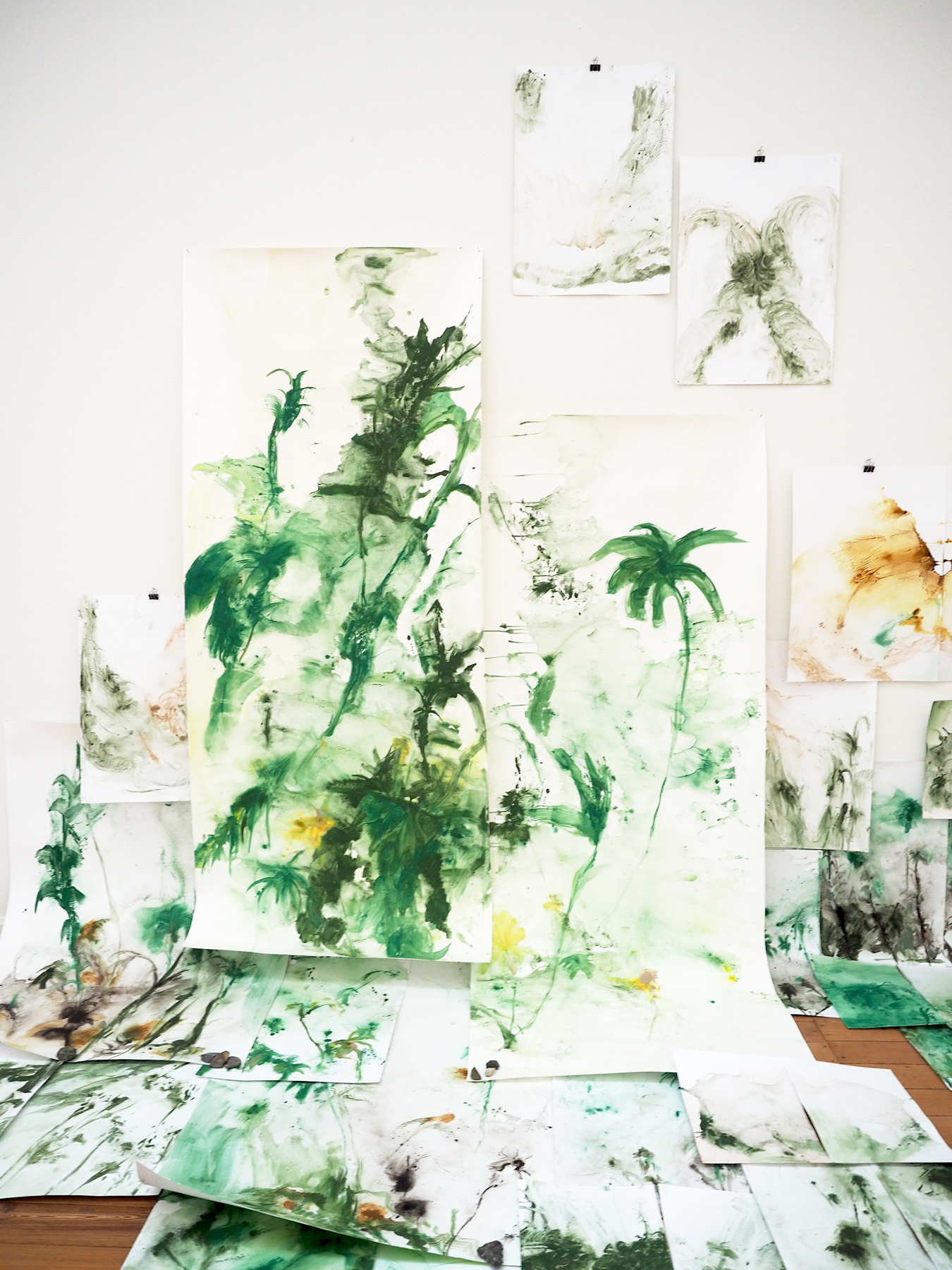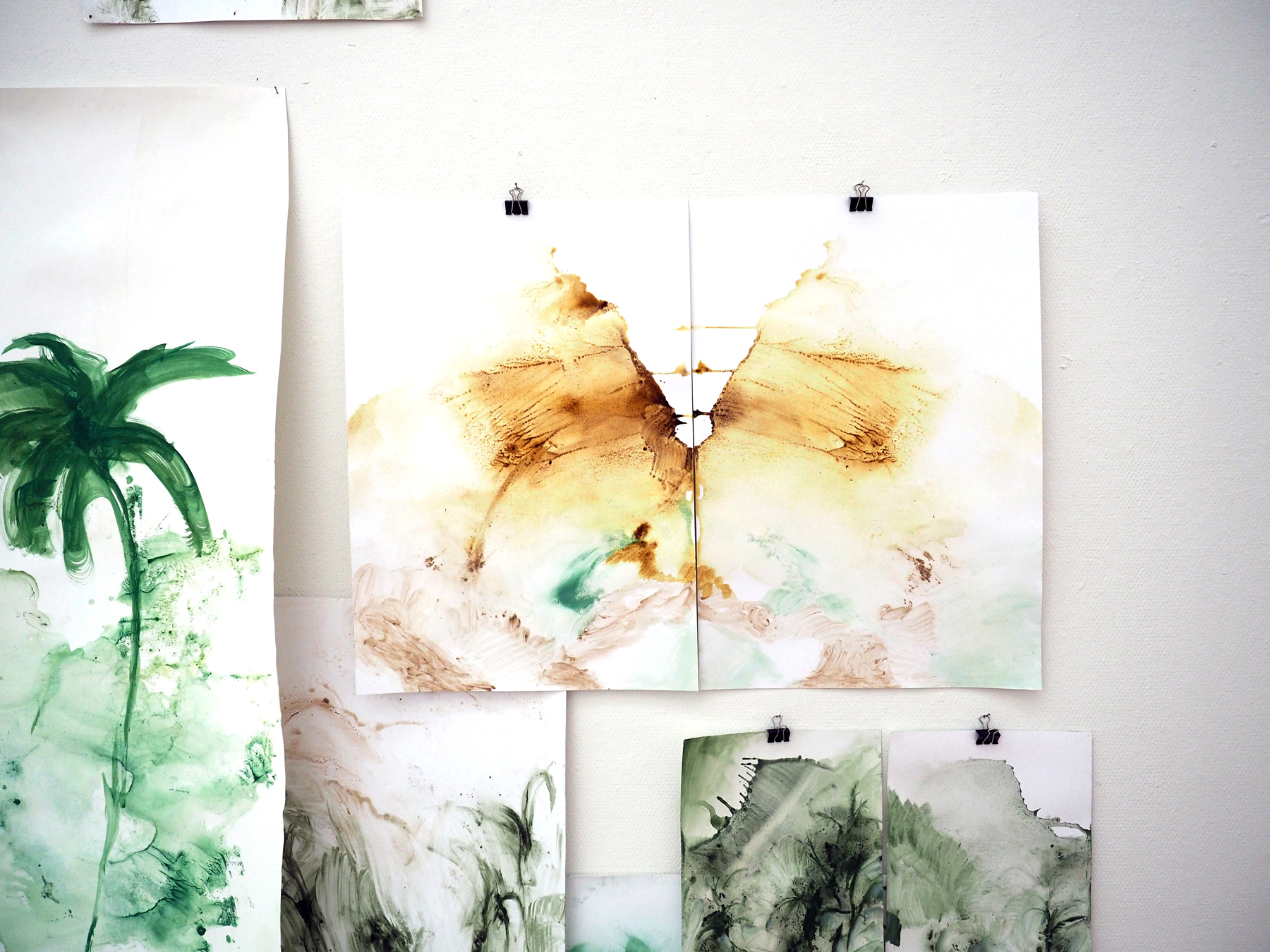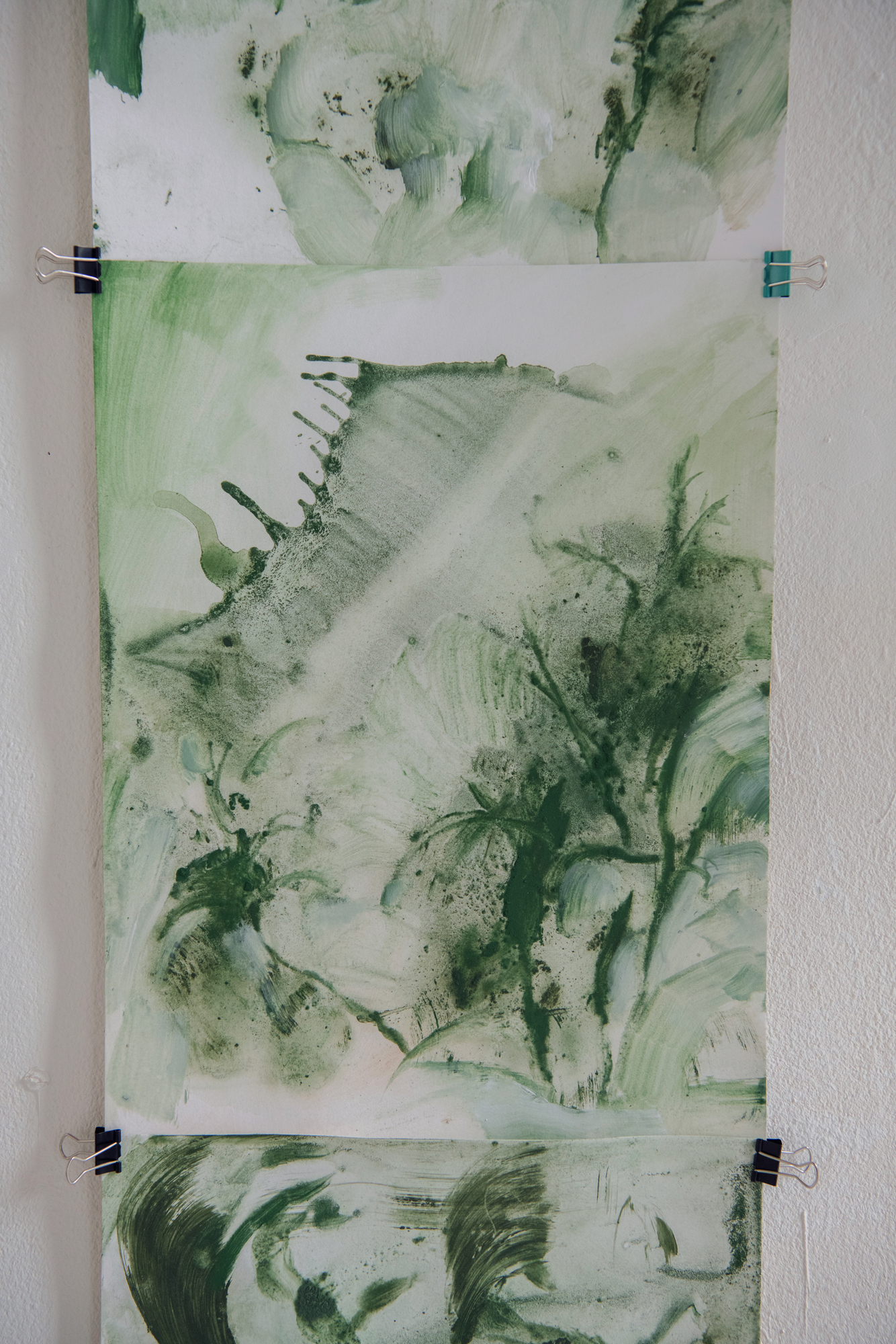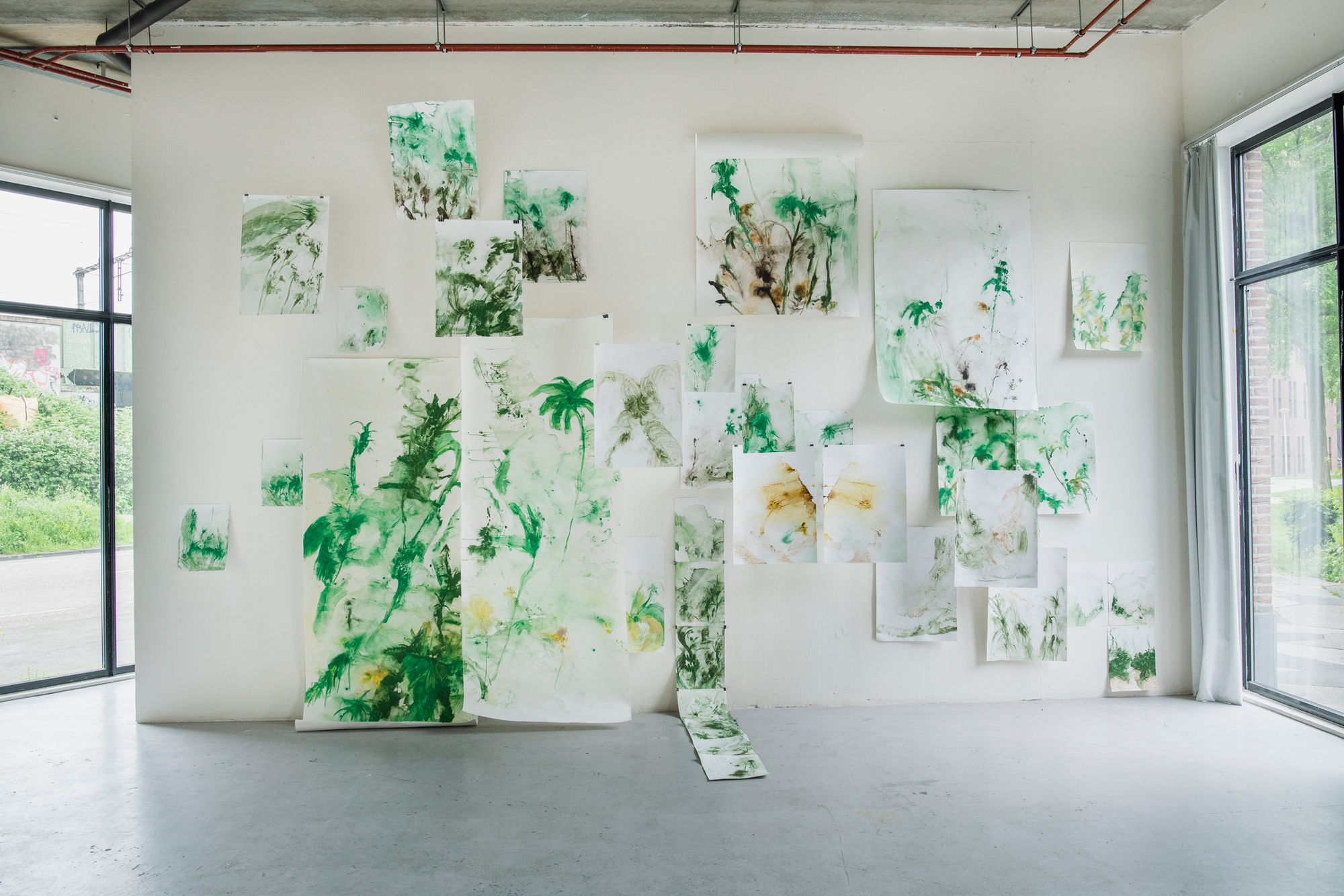The Green Ecstatic






Pigments, casein and water on paper. Various sizes
Ongoing and growing installation + research
The Green Ecstatic, 2024
Pigments, casein and water on paper. Various sizes
My research around the colour green, the ontology of plant-life, and the eco-ecstatic have led me to try out various artistic methods of embodied creation. For The Green Ecstatic, I have ‘performed’ re-iterations of the automatic and psycho-morphic Surrealist method of tracing the unconscious; Decalcomania. Ithell Colquhoun, the British surrealist painter, occultist, and feminist; used this method to open up her painting process to the unconscious, and transfering the esoteric/hidden towards the surface. She seemed to be moving against the Surrealist vision of simply emerging from the individual unconscious, and rather focussed on the collective and connective unconscious.
Engaging in the decalcomania process myself, I enter a space of non-knowledge. By pressing the papers together, with hands and whole body, pigments and water, a realm emerges that is not fixed. Images of fluidity and green-ness appear, and permeate the materiality of the pigments. I intuitively respond. Like x-rays, as if peering into hidden layers, barely there landscapes, and plant-like shapes, the images take form. The physical action of pressing is a tuning in that locks into personal memories of ecstatic experience in nature. Pigments, with their origin in earth, minerals and plants, remember too.
Each pigment has its own will, and leads to different responses. French Earth is clay, it is unruly, doesn’t bend to my will as a painter. I have to follow its nature, by rubbing it into the paper, spreading it out. Chromo Oxid Green, the green used for camouflage colour, is completely opaque and hides everything beneath. The translucent lake pigment Sap Green is, historically, made by boiling down the juice of buckthorn berries, and is the only green available directly from plants, but will fade in due time. Through its ephemeral appearance a landscape seems fleeting. Cadmium Green is derived from heavy metals, and is toxic for the environment. Through the process of re-performing decalcomania I am continually exploring how these various pigments behave and what it means to use newer synthetic pigments from the 20th century alongside historic ones.
It is through doing and failing, that differences come to the surface, as Barbara Bolt writes; “in everyday life we don’t always welcome the misfires and bad performances. In the creative arts and artistic research, on the other hand, it is these “misfires” that become the source of innovation and movement. This is the “stuff” of research.” Misfires in the Decalcomania process have led to unexpected variations in the images and depth of their materiality. The type of knowledge it produces is not that of hard facts, but one of an intuitive perception. Of a shared ancestral green against a geo-political back drop of mining and excavating earth for its resources. The eco-ecstatic turns toward eco-grief. A melancholy feeling of awe and loss simultaneously.